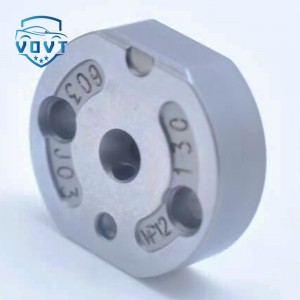Abstract:
The early wear of injector nozzles significantly affects the precision and stability of fuel injection in diesel engines, leading to increased fuel consumption, deteriorated combustion, and higher emissions. Traditional diagnostic methods based on flow or leakage measurements can only detect severe wear stages, while early micro-wear remains difficult to identify. To address this limitation, this study proposes an early wear diagnosis method for injector nozzles based on vibration signal features, combining time–frequency domain analysis and intelligent pattern recognition.
A high-pressure common-rail injector test bench was developed to measure vibration signals during injection cycles under various wear conditions. Accelerometers were installed near the injector body and nozzle tip to capture transient vibration responses at injection pressures ranging from 60 MPa to 200 MPa. Controlled wear was simulated using precision lapping and long-term fatigue testing, ensuring quantitative characterization of nozzle diameter increase (0–15 μm).
The collected signals were processed using wavelet packet decomposition and short-time Fourier transform (STFT) to extract multi-scale features such as energy entropy, spectral kurtosis, and characteristic frequency amplitude. It was found that the frequency band of 18–25 kHz is particularly sensitive to early wear, where the vibration energy increases nearly linearly with orifice diameter growth. Moreover, the appearance of secondary peaks in the frequency spectrum corresponds to micro-leakage and pressure rebound effects.
For intelligent classification, a support vector machine (SVM) model optimized by a genetic algorithm (GA) was trained using the extracted vibration features. The diagnostic model achieved an accuracy of 95.6% in distinguishing between normal, mild, and moderate wear stages. The method demonstrates strong robustness to noise and operating pressure variation, outperforming conventional amplitude-based detection approaches.
This study establishes a feasible and non-intrusive diagnostic approach for the early detection of injector nozzle wear. The proposed vibration-based model provides a new theoretical and practical foundation for predictive maintenance and condition monitoring in modern diesel fuel injection systems.





















